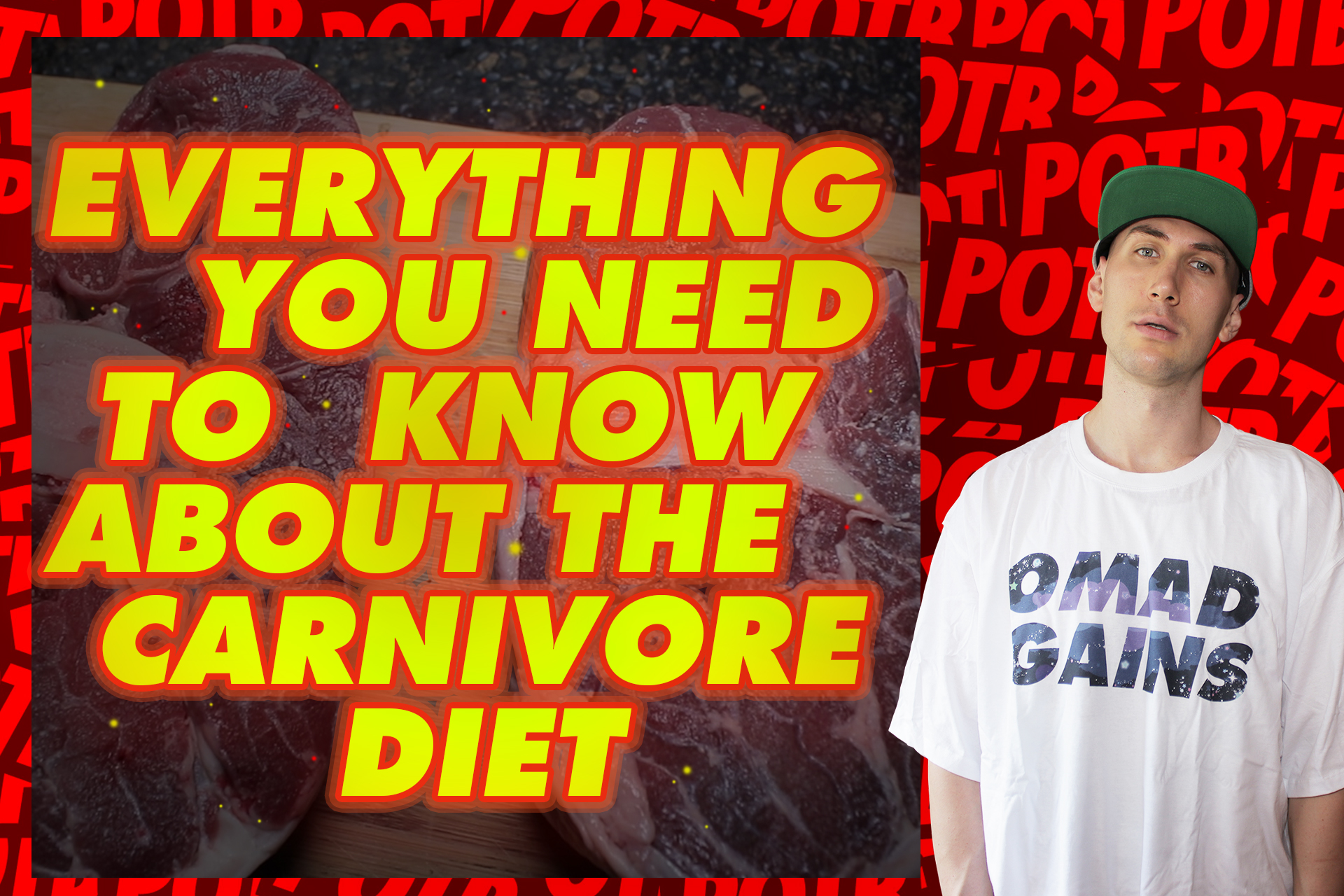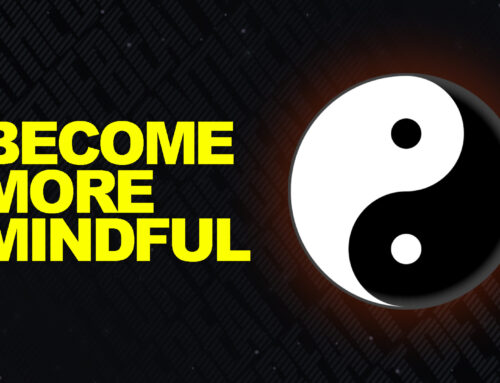If you’re even a bit interested in things like nutrition, health, biohacking, and bodybuilding, then you’re most likely already familiar with the quote-unquote brand new diet out there. Called the carnivore diet, it seems like the same seriously shacked not only the world of nutrition but as well the whole internet and social media.
After doing it for over a month straight and also having close to two years of experience with a slightly different version of it, I decided to write this post, in order to share some information, you might want to consider. If planning to jump on it. Few suggestions and my personal take on the diet. And the way I’ll do it is by going through each of the following things:
·What is the Carnivore Diet And How to do it;
·Eating Regimen And Macros;
·Keto Vs Carnivore;
·Adaptation;
·Why it works and what makes it so effective;
·Benefits;
·Who is the diet for and is it sustainable in long-term;
·The Carnivore diet and Fasting;
·The Carnivore diet and Bodybuilding
·And then some final thoughts to wrap everything up;
That being said let’s begin with the first one…
What is the Carnivore Diet And How To Do it
Well, I guess answering that question is really not difficult.
Because the carnivore diet is most likely the simplest diet, you’ll hear of. Based on the idea that humans evolved to only use animal products for food. The same is often described as the complete opposite of veganism. It includes nothing but animal products, in particular, meat. And its biggest staple is beef (preferably grass fed).
Besides beef, it also consists of other (ideally pastured) meats. Like chicken, turkey, lamb, and pork. Depends on your personal preferences and taste. Those meats could be lean, fatty or even organ. If you want, you can add more animal fat. By incorporating things like lard and tallow. Or to merely drink bone broth.
You can also eat all kinds (preferably) wild-caught fishes, cage-free eggs, and finally (if possible grass-fed) dairy products like butter, cream, and some hard cheeses. Except for the last one, there are literally no limitations. Which means that if you decide to have some at all, you should limit your dairy intake. Although part of the diet because is an animal product. Due to lactose intolerance and because it could cause some cravings, many people prefer to avoid dairy. And the place it has in your diet strictly depends on how well you can tolerate it.
Beverages
The only beverages allowed on the carnivore diet are water, coffee, and tea. As long as the first, it can be carbonated. If that’s what you prefer. Yet, my recommendation is going with some better quality spring water. Because (1) it is far less taxing to your kidneys; and (2) it flushes your whole system way better.
Spices
Besides coffee, the spices are the only exception of allowed on the diet, plant-based products. Which means that pepper, oregano and of course salt are all your friends.
Despite that, there are 2 things, you should avoid by all means. (1) Packed with gluten, soy, sugars and/or other chemicals and preservatives sauces; and (2) all of the artificial sweeteners.
Zero calories or not. Besides damaging your cells. What all of them do is nothing but keeping your cravings and sweet tooth. Even when you no longer eat sweets or carbs.
And here I’ll make this little suggestion. To get some extra iodine, you can either use Celtic or mixed with organic seaweed sea salt. Trust me this will make a difference. Especially if you’re a strength athlete or a bodybuilder.
And that pretty much sums up the entire carnivore diet. Now let’s quickly cover all of the things you should stay away from when following the same.
Foods To Stay Away From
Simple as it sounds those are basically all other foods. Apparently, that means any kind of fruits, legumes, vegetables, and starches. Or in other words, you should stay away from all carbs. In spite of their type, glycemic index, and quality.
Supplementation
Usually, the carnivore diet doesn’t include any kind of supplements. And the idea behind it is that eating enough high-quality animal products like grass-fed beef and whole free range eggs ensures meeting our daily nutrient requirements.
Now the vitamin C argument…
Although many people would argue this diet is nothing but a sure recipe for getting scurvy, and maybe some other issues. As a result of a vitamin C deficiency. That’s certainly not the case. Actually, it has been proven that in our bodies the Vitamin C and the glucose compete with each other. Due to that not eating carbs exponentially drops our requirements for the first. To the point where we can meet them by eating only meat.
A perfect example of that is the Eskimo tribes. Who not only not suffer from any deficiencies, but also appear to be far healthier than the western men and women. And whose diet consists of nothing but meat. To learn more about that, you can get your hands on the written by Vilhjalmur Stefansson book. “The Fat Of The Land”
Caloric Intake And Eating Regimen
As I’ve mentioned, the carnivore diet doesn’t include any form of calorie counting nor restrictions. You eat as much as you want, whenever you want. And you can have as many meals as you want. Accordingly, to many of the dieters, that’s inspired by the eating habits of the tigers and the lions. Yet, I personally believe they forget something very important.
Similar to what our ancestors were doing as hunter-gatherers, besides eating only meat, those same animals don’t eat frequent meals. But instead, follow an intermittent fasting protocol and feed themselves once, every one, two or maybe even several days. After hunting and killing their food.
Macros
There aren’t any guidelines in terms of how much fat or protein you should eat. While some people like to stick to the original keto recommendations. And get the most of their calories from fat. Others (like me) prefer having an almost equal ratio between fats and proteins. Yet to find your personal sweet spot I suggest the following things.
·Experiment with different fat and protein intakes. You can do that by simply using different cuts of meat.
·Pay attention to how you feel;
·Always consider how many times you train and how much muscle you have;
·Eat to feel awesome, not be hungry, recover and build muscle;
Remember: The more frequently you train and the more muscle mass you have, the more protein, you’ll need. Obviously, that applies to any diet and eating regimen.
And this one is not an excuse.
Which brings us to the next thing, I’d like to discuss. The difference between a standard Keto and The Carnivore diets.
Keto VS Carnivore
Although both diets restrict carbohydrates, this one takes that to an extreme. And despite such a thing, really doesn’t exist. Because there are trace amounts of carbs in all foods including meat and eggs, that becomes the reason why some like to call it a zero carb diet.
On both keto and carnivore diets, the body learns how to burn fat for fuel. And whenever that’s required, to make its own glucose, through the process of gluconeogenesis.
Besides not eliminating carbs entirely, the standard keto diet also includes foods which although do not contain carbs are not part of the carnivorous way of eating. Examples of that are the different nuts and vegetable oils. (olive, coconut, MCT and brain octane)
By putting most emphasis on the fats, the keto diet has a lot more clear guidelines in terms of daily macronutrient intakes. Usually, those are 70/80 fats; 20/25 protein; And less than from 5 carbs. The idea behind those numbers is keeping you in ketosis and preventing any caused by excess protein insulin spikes. Both of them, however, are not goals on the carnivore diet.
My guess is that on the carnivore diet, the body cycles from being in and out of ketosis. But to those who want to make sure they spend most of the time there. I strongly suggest applying an IF protocol, with a much-restricted feeding window. Extra tip: The shorter, the better…
Insulin
The overconsumption of protein and particularly, the possibility of spiking insulin is one of the things that most of the people fear when it comes to this way of eating. But new research shows there’s nothing to worry about.
As by far most of us already know. When combined with carbs, protein takes the insulin spike even further, than the carbs by themselves. Or in other words, it does amplify the carbs inherent insulinogenic capacity. But new evidence surprisingly proves that this happens only in carb fed individuals. And the results are in fact entirely different when someone doesn’t consume carbs. Which means that the expected rise in insulin just doesn’t occur, when a person follows a very low to no carb diet.
Yet, to find out more about that I highly encourage you to watch the interview “Is the fear of protein the new fear of fat” with the ketogenic researcher Dr. Benjamin Bikman.
Adaptation
Changing your way of eating that drastically obviously requires some adjustment. Depends on where you currently are with your diet and relationship with food. The same will either be fast and smooth or long, unpleasant and quite challenging.
While already doing well on a ketogenic/HFLC diet seriously helps you make a significantly fast and smooth transition. Being on a standard American diet almost exclusively guarantees long adaptation process. Dealing with massive cravings, cramping, nausea, irritability, brain-fog, decreased levels of energy. And getting what many describe as flu-like effects.
What makes the Carnivore Diet So Effective
The carnivore diet is an extreme elimination diet. Which means that by cutting out everything but meat. It also eliminates all of the potential triggers of different things like allergies and inflammation, which are the root cause of many illnesses. Including mental conditions like depression and anxiety. Trust me I have plenty of experience with both of them.
Despite we’ve been told for decades that meat is bad. And that to maintain optimal health we have to eat lots of fruits, veggies, and whole grains. It seems like in many cases, those are the exact foods that make us sick. So let’s quickly name a few examples of how that happens.
Since I believe they’re the worst, I’ll begin with the fruits and the fructose.
Contained in very high amounts in pretty much all fruits and metabolized only by the liver, fructose can’t be used for energy and is toxic to our bodies. Always stored as fat it has the same effects on the liver such as the well-known liver toxin ethanol. Which is basically alcohol. Ingesting fructose for extended periods contributes to fatty liver and insulin and leptin resistance, which ensures developing other illnesses and becoming obese.
Now let’s take a look at the grains. Probably the biggest problem with them is the anti-nutrients they contain. There are several different anti-nutrients: Gluten, Lectins and Phytic acid aka Phytate.
The anti-nutrients are part of the plant, which is there to protect them. You can think of it as some sort of a protective shield or even a self-defense mechanism. Which works against insects, birds, and other animals.
The more interesting detail, however, is that, while some species just don’t have trouble eating them, with humans things are entirely different. Which means their consumption could not only very negatively affect our gut flora and processes of both digestion and mineral absorption. But also lead to a large number of health problems like allergies, autoimmune and celiac diseases, intestinal permeability or leaky gut syndrome, mental illnesses, skin problems, and even seizures.
The last reminds me that is really no wonder why they started using fasting and ketogenic diets to treat epilepsy. But anyway. Now let’s discuss the second biggest problem with the grains: the large amounts of carbohydrates in them.
Although we’ve been told that carbs give us energy, that’s only one part of the truth. The whole truth is that for probably 95% of the people those carbs are just way too many. Which means that anyone who’s not an athlete with exceptionally high energy demands burns just a fraction of them. The rest stores as fat. Eventually, gains weight. And over time becomes overweight.
My two last concerns with the grains are that they are quite low in vitamins and minerals. And in some cases contain too much fiber. Which could be damaging to the gastrointestinal tract.
Finally the veggies. While usually they’re all considered as healthy, some of them are really not so different than the fruits and the grains. And the best examples of that are the different legumes and the tomato. All of them packed with lectins, the second also contains high amounts of sugar, some of which fructose.
In many cases, those three kinds of (for most people) craving causing foods are also sprayed with chemicals, pesticides, and other poisons. Like for instance the brown rice. Which although some people still considered a superfood. Not only has way too many carbs for the average person. But also contains phytic acid and dangerously high amounts of arsenic in its bran.
The reasons why that many people see the carnivore diet as a life-changing solution are more than obvious.
By virtually eliminating everything, it also eliminates all of those, so-called healthy, yet, plenty of issues causing foods. Even that we’ve been told meat, especially the red meat is bad, the same is a nutritional powerhouse. And differently than the nutrients of the plants, which in order to be utilized by our bodies have to first undergo some serious processing. Meat’s nutrients are highly bioavailable to us as humans.
Apart from that, more evidence proves that instead of harmful, the saturated fat is actually healthy and even heart protective.
Now let’s take a look at the biggest benefits, people report they get, after switching to the carnivorous way of eating.
Benefits
Although by far the diet hasn’t been scientifically studied, the people who followed it (even for a while) report getting some amazing benefits. In terms of not only one, but all aspects of their lives. So let’s name the few most commonly reported ones.
Weight loss, healing mental conditions like anxiety and depression. Healing autoimmune diseases like psoriatic and rheumatoid arthritis. Improved mood and mental clarity. High levels of energy. A simple and easy way of dieting. Decreased inflammation and joint pain. Better and faster recovery after exercises. Need for less sleep. Suppressed hunger and zero cravings.
Anecdotal or not, most of that evidence comes from real people (even former vegans) who tell other real people how the diet changed their lives. Not company owners who stick particular research in your face to prove that only the diet which includes their product is the one you should follow.
Cravings
Simple and enjoyable, eating only meat and eggs entirely frees you of all sorts of cravings. That because: (1) You don’t get to eat highly palatable food like with any other diet. Which means you simply don’t give yourself a chance to consume any hunger triggering foods. And (2) the animal fats and proteins suppress Ghrelin aka the hunger hormone. And boost the production of the satiety hormone CCK AKA Cholecystokinin.
Now let’s talk fasting. In particular OMAD
Fasting
I said that many times in many of my previous articles. Eating one meal per day really has nothing to do with discipline. Nor willpower. But instead boils down to three simple things.
(1) Having stable blood sugar and energy levels;
(2) Not experiencing any hunger;
(3) Your body’s ability to access it’s own stored fat as a primary fuel source.
By going on a carnivore diet you not only immediately get the first two. But also teach your body how to use for energy the closest to its own fat, i.e. the animal fat. And once you get it to the point of effortlessly doing that, you’re all set to stay without food, pretty much as long as you want.
In the past. I used to cycle periods of eating OMAD. And ones of having not more than 5 or 6 meals per week. Or in other words, incorporating one or two weekly 48 hour fasts.
As a former carb addict, I can easily tell you, all that would never be possible for me, if it wasn’t for my modified version of the steaks and eggs diet.
The Carnivore Diet And Bodybuilding
Even that the carnivore diet became popular recently, mostly because of people like Dr. Jordan Peterson, his daughter Mikhaila Peterson and Dr. Shawn Baker. Thanks to every single one of them. The truth is that different variations of it have been around since forever. And I’m not just talking about our ancestors or the Inuit tribes. But about the used and recommended by the two most influential to me bodybuilders ways of eating.
Serge Nubret. One meal a day. Up to 6 pounds of red meat. Plus no more than 100grams of carbs coming from white rice.
While during his early career he preferred horse meat. Later in his life, the “Black Panther” switched to all beef.
Vince Gironda. The legendary Steaks and Eggs/Meats and eggs diet. Which in some cases also included mixed with half and half Rheo Blair protein. Mohammed Makkawy (Bonus)
Trained by Vince Gironda, his diet included nothing but meats and fishes.
Is it sustainable In Long Term?
Yes, it most definitely is. And the more you do it the more sustainable it becomes. Back in 2014, I started a very similar to this diet. The difference was that I was having larger quantities of full-fat sour cream as a dessert. And I stayed on it for 2 years. Yet, that’s nothing and if you go on the dedicated to the carnivorous way of eating, blogs, facebook groups, and Reddit topics. You’ll find that there are people who have been eating like that for over a decade.
Final Thoughts
Honestly, I believe anyone should stay on this diet for at least 6 months. That will help a person develop a completely new relationship with food. Get very lean. Free herself of hunger and cravings. And begin following an intermittent fasting protocol, or maybe even jumpstart OMAD plan. I also recommend it to all of the people who struggle with depression, anxiety and/or panic attacks. And to those who believe they can’t do sh*t without the help of drugs.
Besides that, also believe that not all people can truly benefit from only eating like that until the rest of their lives. And that instead, they should use those 6 months to do some massive research. Learn how the different foods work. Where they come from. And after that start experimenting by adding not more than one food at a time. That will help the person discover her tolerances and the true impact a particular food has on her health, physique, and well-being. Do not take it as a challenge. But rather see it as an opportunity of understanding your body.
I hope that makes sense.
Yours Truly:
Peteonthebeat
- The Middle Pillar Meditation - March 21, 2020
- Outwitting The Devil Book Review - February 20, 2020
- Do Calories Matter? - July 2, 2019







